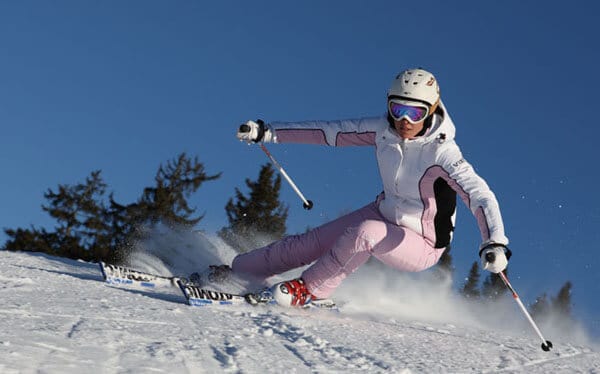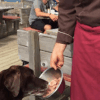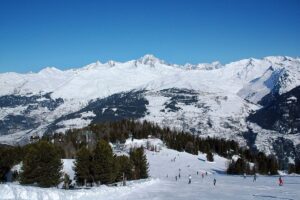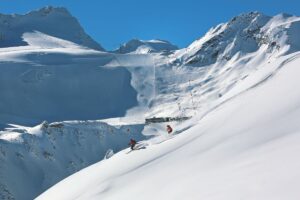
In some respects, it deserves its celebrity. After all, there aren’t many places in the world you can ski easy pistes around an entire mountain – and none can quite match the gob-smacking scenery of the Dolomites. Fast, confident skiers will get round in three hours (spending much more of their time on lifts than snow) but for most, this is a project for the whole day, including lunch, coffee/bombardino stops and the odd excursion. It should be started as early in the morning as possible (you really don’t want to be catching taxis home because you’ve missed the last lift).
But the best skiing around Selva is not on the Sella Ronda
However, you shouldn’t let the Sella Ronda distract you from the rest of the skiing in the area. Sadly, its fame means that the pistes are often crowded, and the lift queues frustrating. Yes it’s worth skiing – once. But when it’s done you’ll find yourself having more fun exploring other parts of vast network of valleys and pistes on offer here.
To get the best of it, think of the Sella Ronda as a wheel with four big spokes – the Val Gardena, The Val di Fassa, the Alta Badia and the slopes above Arabba. Each offers much more than a day’s skiing – and some (notably the Alta Badia) will take a couple of hours to reach. But you should try to nibble at all four during your trip.
The Saslong is one of the highlights
One of the best pistes to ski is the Saslong race course, which runs from the Ciampinoi gondola down to neighbouring village of S. Cristina. This is where Britain’s best-ever ski racer, Konrad Bartelski, came within a hair’s breadth of winning the Wold Cup downhill in 1981. It’s usually pisted and open to the public, and when the ski is cold and grippy most confident intermediates will be able to ski it. It’s a salutary experience, to pull over at the side of the piste and think of the professionals straight-lining it down the slope. The crux of course features three bumps known as the Camel Humps, and it was years before a World Cup competitor had the nerve to jump them. The first man to do it was Austrian Uli Speiss, in 1976, and he reckoned it took a second off his race time. If you want to emulate his achievement you’ll need to be travelling at 75mph, so you can jump the required 30-40m.
By the way, the snow quality on the Saslong is some of the best in the area, because it’s almost always in shadow – but make sure you ski there first thing in the morning, as everyone wants to ski the course at least once on their trip and the corduroy is usually gone by mid-morning.
Here’s a 3D graphic of the skiing along the Val Gardena:
Other areas to explore include the Alpe di Siusi sector above the town of Ortisei (connected by bus to Selva) – which offers mostly very gentle pistes – and the Seceda sector above S. Cristina, which is something of a local’s favourite. It’s sunny, home to some nice mountain huts, and features a gorgeous 10km piste all the way to Ortisei.
Not bad for beginners but confident intermediates will like it best
There are nursery slopes right next some of the hotels in Selva Gardena, which makes for a stress-free learning experience. The problem is moving on from there – as the easy pistes are rather scattered about down the valley, and don’t link up well. You can easily find yourself on a blue that turns into a steeper red.
So it’s best to save Selva – or any of the other Dolomite resorts – until your third or fourth ski holiday, when you’re already linking your turns well and developing an appetite for speed. At this level, the skiing here is a dream. In fact, when the snow’s cold, soft and grippy it’s as good as anywhere in the Alps.
Not a region for off-piste skiing
Anyone with a taste for off-piste skiing should think twice about coming here. The climate here is relatively dry – unless there’s an exceptional run of storms out of the Gulf of Genoa, as there was in 2008-9 and 2009-10 – and the region is known for its long runs of sunny weather, not its powder.
Don’t come here later than early March
For piste-skiers there’s only one real drawback to skiing here. The region lacks much in the way of slopes above 2500m (except on the Marmolada glacier). Midwinter, that’s not a problem. But in a warm spring the quality of the snow on all but the highest pistes will suffer.



















Add Comment